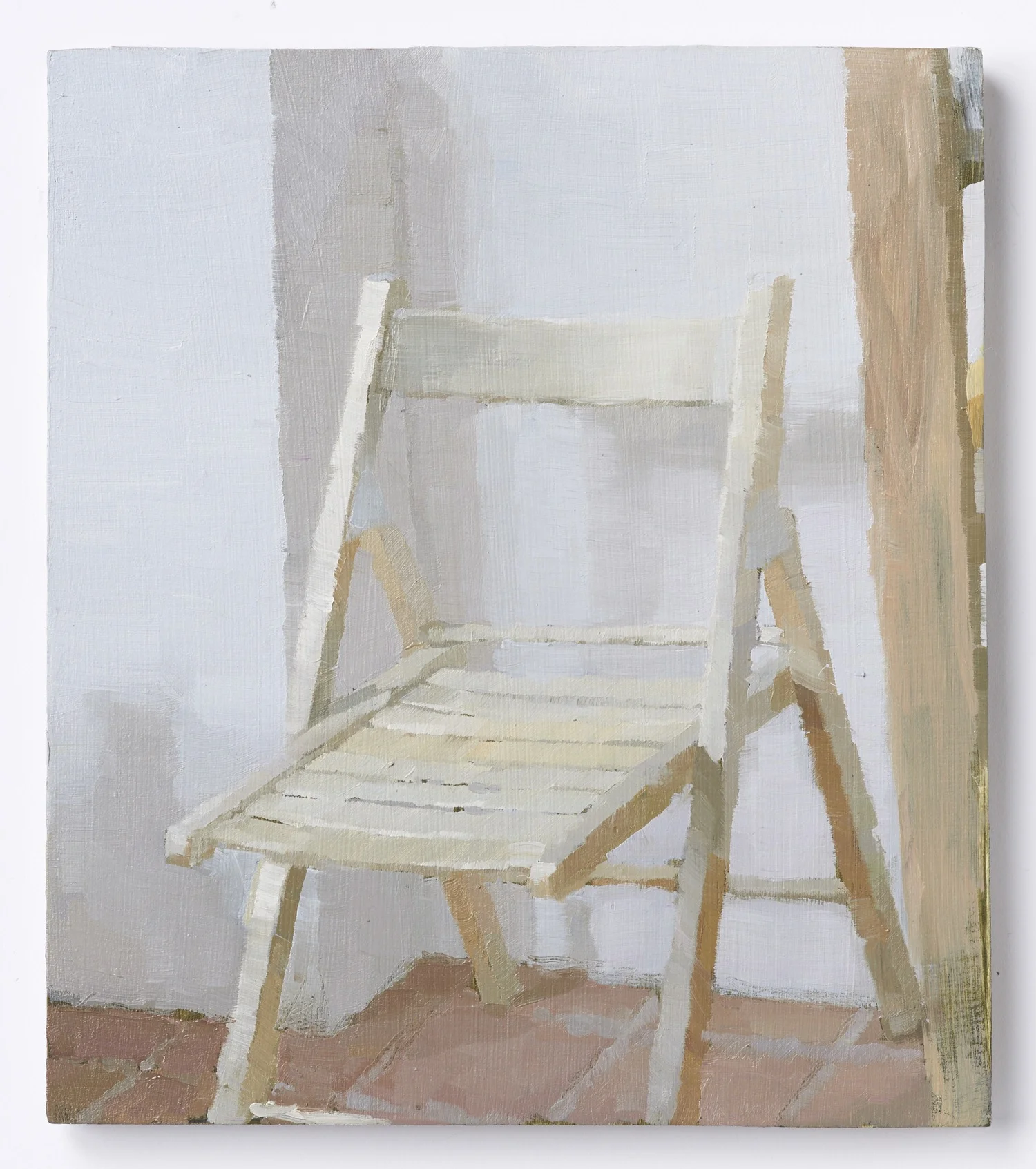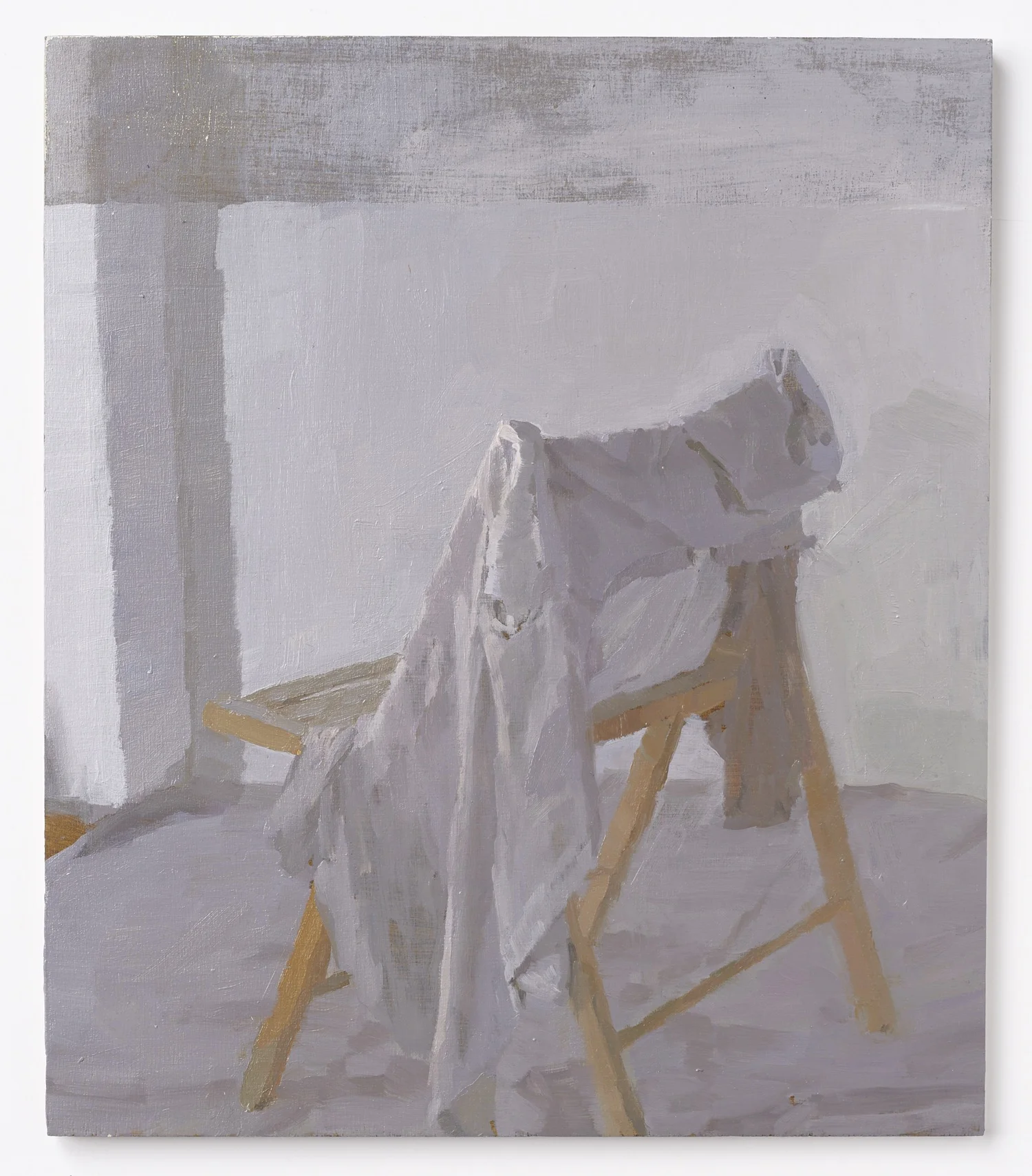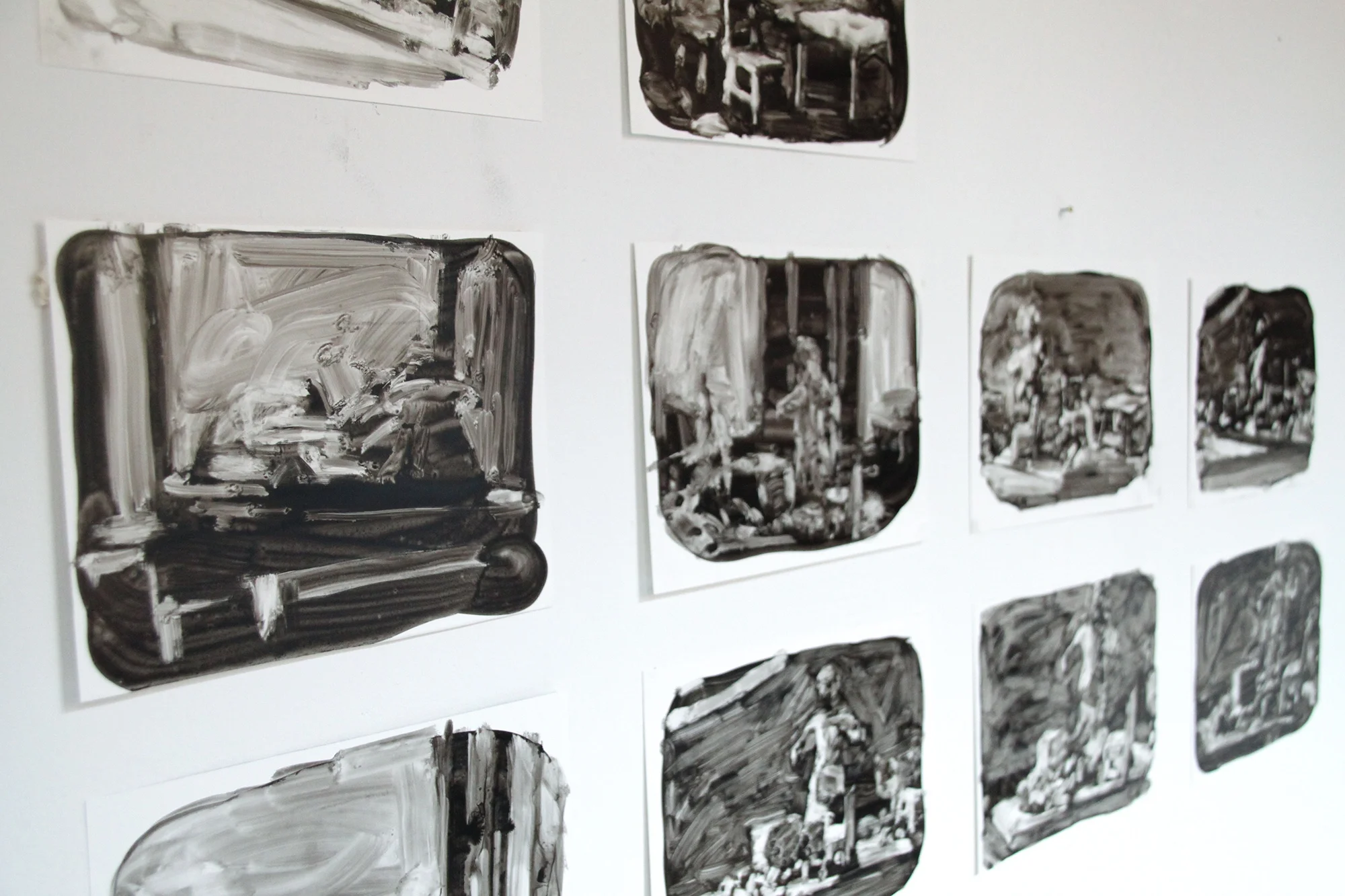Starting with Light - Interview with Kjersti Foyn by Wolfram Schnelle
I rommet XI, 2018, Oil on plywood, 21 x 24 cm
I rommet XV, 2018, Oil on plywood, 30 x 40 cm
Kjersti Foyn, born 1985 in Stavanger, Norway, studied painting at Kunstakademie Düsseldorf. She was interviewed by Art Springboard’s Wolfram Schnelle in 2018.
In your degree show you showed a series of small paintings with chairs. Tell me something about your choice of subject and the size of the works.
I’ve been working with trivial and everyday objects where it’s not about telling a story but focusing on something that is. In a way the subject is light, space, and atmosphere. I’ve been coming back to the subject of chairs over and over again. They have a presence as objects in the room and at the same time you have a feeling of absence. Somehow the empty chairs refer to the space around them.
What about the size?
I like the intimacy of working on a small scale and the compressed energy that can appear in the small works. I also like the intimacy of looking at a small painting. You have to go close, and usually have to stand alone looking at each of them. Before I start the painting it’s just a small piece of wood or canvas. I find it fascinating that after a while it’s a larger room in there. This was something that became quite clear to me earlier, when I was working on clouds and the night sky in small scale.
Tell me something about the role that light plays in your work?
It’s important. When I paint, I try to forget about the subject and I paint the light so that the image will come through the light. I don’t do any sketching of the structure and only a rough plan of the composition. I start with the light. In a way it’s my main subject.
How does that process work?
It’s important to me that I have my subject in real life in front of me. The light creates the moment. That’s also why it can be difficult to go back to a painting the next day. Through the light I can work indirectly with the figurative. With the charcoal and ink-works, for example, the light and figuration come forward through erasing the black. Light is a way for me to get closer to a more open reality that’s less bound to a form we have to give a name. The light falls on everything and in a way it dissolves the image from its ‘label’, from the name we give it.
What about the material. Why do you like to work with paint?
With paint, you have an immediate reaction and an immediate result from your action. It’s a fluid material and a fluid process, and I like this process very much. You have the mixing of the colours, the brushstrokes, and it all comes together in a process where I can be in the moment with what I’m doing. It has the ability to make time disappear, and at its best I can be one with the material.
When is a work finished?
When I start to feel that if I do more I will destroy it. Finding the right moment to stop is intuitive and often a quick decision. Then I stop and put it away so I don’t look at it. Because if I keep looking at it and think ‘maybe I should do a bit more here or there’ it can so easily be the stroke that’s too much and then you can’t go back.
Do you have many works that don’t make it?
Yes, I would say only one out of many make it. I often do many try-outs before one work. And in some periods many will work, in other periods few will work. I try to create enough space that each trial is allowed to fail. There are also works when I don’t see hope, even before I finish them. When I see the fundament is not right.
Hearing you talk about your work it makes sense that you choose the interior of your studio as a subject matter. Could you imagine going out into nature and doing the same thing there? When it comes to the choice of your subject matter, what are you after?
My subject has been backdrops of everyday life that you don’t really notice so much. Things that are just there and they’re not saying much. I guess I’m choosing subjects that have a certain emptiness. Nature is also something that’s just there. Before I painted clouds and the sky for a period of time. Afterwards I wanted to try out a contrast, something trivial that doesn’t have the obvious beauty that nature does.
The cropping of your objects suggests that, although you paint a chair, the painting is not about the chair. It might be off-centre or parts are cut off by the borders of the composition.
The space around the chair, or the space the chair is in, has as much importance as the chair itself. The negative space. It’s a chair in a room but the chair can disappear a bit even though it’s standing there and is the main object in a way. The relation to the room and how it is in the room and the atmosphere are all important. Maybe it’s more to do with the gaze as well…
Tell me about these works here. They are interiors in ink on a very smooth paper series of ink drawings in the studio
Most of them are details of miniature models I’ve made that stand in my studio. These works are made of ink on a paper that’s similar to photo paper. They’re completely black at the beginning and then I start to wash the ink away. The light comes from removing the ink. I like this method very much. It is impossible to do with oil painting. It’s good to work on the oil, ink and charcoal in parallel. In the end they are different ways of working with light.
„I start with the light. In a way it’s my main subject.“
Looking at your work, [Giorgio] Morandi comes to mind as somebody dealing with similar questions. Are there any painters that are specifically important to you?
Morandi is one of the artists that has been most important to me. There’s also an English painter called Gwen John that I like very much, and the portraits Rembrandt made in his late period have also been important.
Tell me about your experience at Kunstakademie Düsseldorf. You said that you studied in Norway before and that you specifically chose Düsseldorf because of painting. What did you take away from your experience in Düsseldorf and how did it compare to what you did in Norway?
When I did my bachelor’s degree in Norway, which I started in 2006, I stopped making paintings at some point and experimented with a lot of different media, mostly site-specific video installations. Afterwards I got back to painting again and it was important to me to get the most out of my last years of studying painting. Compared to the art education in Norway, Kunstakademie Düsseldorf has a much greater focus on painting. I went to Stefan Kürten’s class – he was very present and involved with weekly colloquiums and one-on-ones. I learned a lot listening to the others in my class and learning about their processes. My professor challenged me but didn’t try to change my process, which gave me room to develop.
What inspires you?
What inspires me most is the very early morning. I go for walks every Sunday at that time of day, when almost nobody is outside. I think the reason why I’m so interested in the early morning is this feeling that the world exists on its own and that it would exist even if people weren’t there. I feel that reality is more visible in that moment. Then during the day I’m more and more sucked into my own things.
What’s next?
Now it’s about finding a way to paint without losing myself too much with everything around the actual process of painting. I’m trying to find periods where I can work concentratedly. At the moment I’m working towards a group exhibition at K21, Kunstsammlung Nordrhein-Westfalen, with other graduates from Kunstakademie Düsseldorf, and an exhibition at The Norwegian Church Abroad in Hamburg in 2019.
Photos: Kai Werner Schmidt



